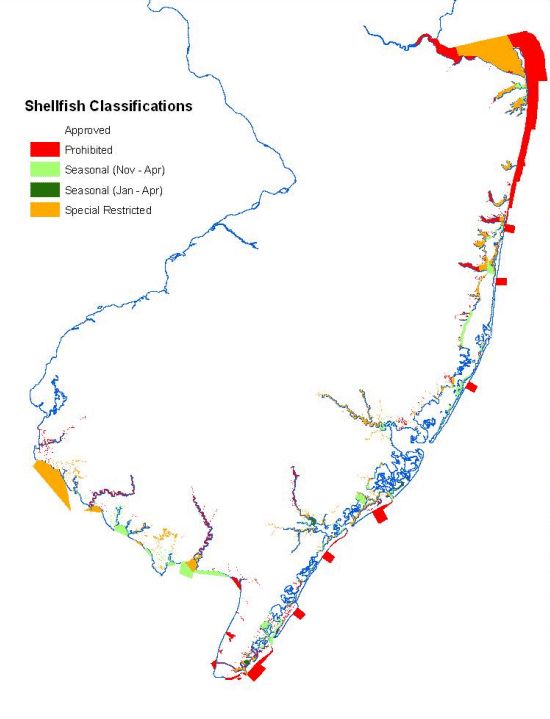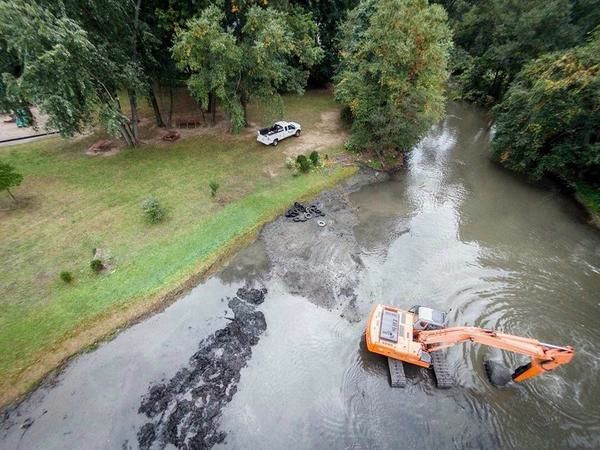Senator Cardinale Walks Back “Drainage Ditch” Remark
But Senator Expands Attacks on DEP Category One Water Quality Program
Blames Bergen County Flooding on DEP Reservoir & Stream Buffer Protections
I must have gotten under Senator Cardinale’s skin with my post on Monday, which quoted him calling Bergen County streams “drainage ditches” and saying that the DEP’s Category One stream water quality protection program was “scientifically unjustifiable” in Bergen County.
I got a lengthy email reply from Cardinale, in which he walked back the “drainage ditch” remark.
But, in walking back that comment, Cardinale may have gone from the frying pan into the fire.
Cardinale went slightly off the deep end, and expanded his attack on the DEP C1 program, essentially claiming that it caused flooding problems in Bergen County.
Of course, I could not let that stand and fired back – enjoy Cardinale’s email and my reply below:
From: “Sen. D.O. Cardinale” <SenCardinale@njleg.org>To: “Bill” <bill_wolfe@comcast.net>, sensmith@njleg.org, “Sen. D.O. Cardinale” <SenCardinale@njleg.org>, “Sen. D.O. Gordon” <SenGordon@njleg.org>Cc: “Kevil Duhon” <KDuhon@njleg.org>, “Sen. D.O. Gordon” <SenGordon@njleg.org>, “Sen. D.O. Greenstein” <SenGreenstein@njleg.org>, “Sen. D.O. Codey” <SenCodey@njleg.org>, “Edward Meakem” <edithkid@aol.com>, “Lisa Riggiola” <theccpl@yahoo.com>, “SEAN SULLIVAN” <ssullivan@njadvancemedia.com>,fallon@northjersey.com, o’neillj@northjersey.com, tjohnson@njspotlight.com Sent: Tuesday, May 5, 2015 1:48:40 PM Subject: RE: stream de-snagging – S2677
Hi Bill,
It is a fact that the DEP makes very little distinction between trout streams and drainage ditches in Bergen county. I did not previously know who led the team responsible for the wholesale reclassification of Bergen’s streams 12 years ago but thanks for the confession.
Now that your prior actions are acknowledged perhaps you can specify how your “TEAM” came to do that project. Who ordered it? For each named stream what were the specific data used to derive your conclusion?
Did you do similar evaluations of all streams in NJ or did Bergen get special treatment. How many streams in Bergen that your project reclassified as class 1 are dry for months at a time? What percentage of Bergen streams did you reclassify as 1. How does that compare with other counties? Do you care about the misery you cause to my flooded out constituents or is your authority a higher priority. Have you bothered to visit places like Oakland after a storm and observe what your denial of remedial proposals has wrought?
I do not believe that all NJ streams are drainage ditches. Many of them are and the DEP treats them the same as pristine waterways in many instances. In my opinion that is not in the public interest. Waterways that dry up for significant periods each year are of different environmental value than those which are spring fed and flow constantly. The former are drainage ditches in my opinion but there is a penchant for control and for saying no in the DEP which in my view has caused an unnecessarily complex process with how we handle the problems these waterways present. Unnecessary complexity costs money which is in short supply.
Our attempts to simplify the regulatory process are not academic. Many of our constituents experience flooding and many local officials have been denied permits for flood control efforts or have been subjected to an overly costly process to obtain permits. I have been to flood sites and heard the complaints of local officials with respect to the DEP. The DEP has become an obstacle to common sense solutions. We Senators seek to convert the DEP, to make it a partner in alleviation of our constituents real problems.
Unfortunately there is a culture in the department which we must overcome in this process and your email points that out in spades.
If you had been paying close attention at the meeting you would have heard me say that the passage of our bill will not remove regulatory oversight from these projects. The DEP will still be notified before work is undertaken and will have an opportunity to stay the process but will then be obligated to say why and to help improve the proposal so it passes muster. That seems to me what a public agency should be all about. But it is not so easy to change old habits.
Sen. Cardinale
Here’s my immediate reply
From: “Bill” <bill_wolfe@comcast.net>
To: “Sen. D.O. Cardinale” <SenCardinale@njleg.org>
Cc: sensmith@njleg.org, “Sen. D.O. Gordon” <SenGordon@njleg.org>, “Kevil Duhon” <KDuhon@njleg.org>, “Sen. D.O. Greenstein” <SenGreenstein@njleg.org>, “Sen. D.O. Codey” <SenCodey@njleg.org>, “Edward Meakem” <edithkid@aol.com>, “Lisa Riggiola” <theccpl@yahoo.com>, “SEAN SULLIVAN” <ssullivan@njadvancemedia.com>, fallon@northjersey.com, o’neillj@northjersey.com, tjohnson@njspotlight.com
Sent: Tuesday, May 5, 2015 3:10:00 PM
Subject: Re: stream de-snagging – S2677Senator – thank you for such a thoughtful and timely reply.
I’ll ignore the attacks and the rhetoric and try to respond to your questions with the policy and regulatory history.
1. For a discussion of the history and basis and background of the expansion of the C1 program during the McGreevey Administration, please refer to the DEP’s November 2012 Report I provided in my prior email.
Please be advised that although Governor McGreevey set the overall policy direction to enhance DEP water resource protections, that the science and regulatory basis for the Category One program was developed by DEP career professionals.
2. For technical basis for the Bergen County specific C1 designations regulatory proposals, see:
Oradell Reservoir (11/18/02)
http://www.state.nj.us/dep/wms/bwqsa/docs/7-9Bprop2002.pdf
Pascak Brook (11/3/03)
http://www.state.nj.us/dep/wms/bwqsa/docs/rnd2C1proposal.pdf
Hackensack River (11/3/03)
http://www.state.nj.us/dep/wms/bwqsa/docs/rnd2C1proposal.pdf
Saddle River (portion – 9/19/05)
http://www.nj.gov/dep/rules/proposals/091905a.pdf
3. Subsequent amendments to the Stormwater Management rules (NJAC 7:8-5.5(h)) established “special water resource protection areas” (AKA 300 foot buffers) around C1 waters, see:
http://www.nj.gov/dep/rules/rules/njac7_8.pdf
4. As you may know, the Category One stream program’s antidegradation policy and protected buffers were a significant basis for the Highlands Water Protection and Planning Act, which Im proud to have authored portions of as well, P.L. 2004, c. 120.
5. During the Corzine Administration, subsequent amendments to the Stream Encroachment rules incorporated the C1 buffers (see: NJAC 7:13
http://www.nj.gov/dep/rules/rules/njac7_13.pdf
6. Regarding flood control issues, although the C1 steam buffers were designed primarily as a water quality tool, by limiting development and disturbance of vegetated buffers, the C1 program provides flood control protections as well, as recognized in the Flood Hazard Act (stream encroachment) rules
7. Regarding flood risks, I think you confuse the cause of flooding in Bergen County – which is extensive overdevelopment and high rates of impervious surfaces – with the DEP measures to reduce those risks.
In closing, I plead guilty to nothing.
I am proud of these accomplishments and my opportunity to serve the public interest.
Bill Wolfe


